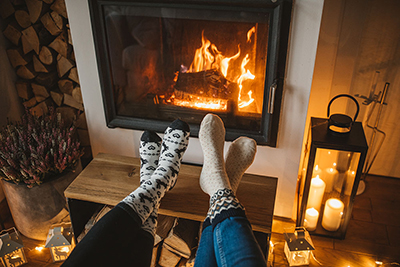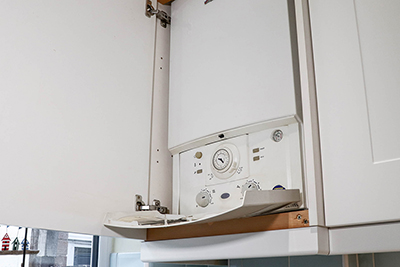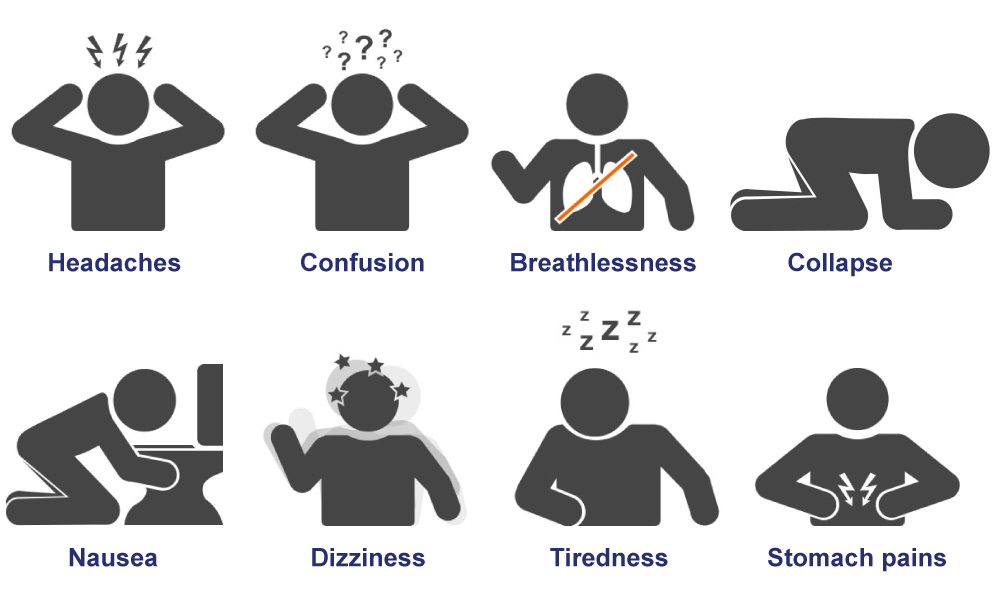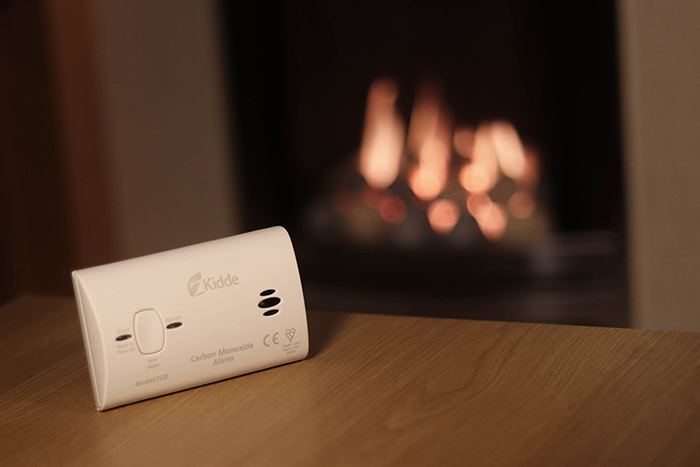-
Contact
Sales & Customer Service
0800 612 6537 support@safelincs.co.uk Live ChatDelivery Enquiries
0800 077 6149 - Resources
Fire & Safety Solutions
CALL OUR TEAM NOW 0800 612 6537
Lines open today 8am - 6pm
Free Delivery
on 100s of Products
Secure Payments
with our fast checkout
Live Online Chat
Contact Us Now
30 Day Accounts
for Public Sector
5 Star Customer Feedback
Carbon Monoxide (CO) Information
Carbon monoxide is often referred to as ‘The Silent Killer’. This is because you can't smell, hear or see carbon monoxide, yet it is a highly toxic gas which can have devastating consequences.
What is Carbon Monoxide?
Carbon Monoxide (chemical symbol: CO) is a colourless, odourless and tasteless gas created by the incomplete combustion of fossil fuels (gas, oil, coal and wood). It is highly toxic to humans and animals.
Where Does CO Gas Come From?
Carbon monoxide gas can be produced due to a fault, poor maintenance or improper installation of everyday appliances.
If you have an appliance that uses a fossil fuel then you could be at risk of CO gas leaking from the appliance and poor ventilation in the room could increase the risk further. Some common household appliances that use fossil fuel are:
- Boilers and central heating systems
- Log burners or open fires
- Solid fuel heaters
- Gas and oil water heaters
- Gas cookers, stoves or hobs
Additional risks from CO poisoning can come from other sources, such as:
- Motor vehicle exhaust fumes
- BBQs, patio heaters and petrol mowers
- Generators
- Gas and oil water heaters
- Shisha pipes (shisha pipes burn charcoal and tobacco)


Why is Carbon Monoxide Dangerous?
Having no colour, smell or taste means that CO gas is very hard to detect without a carbon monoxide detector.
Inhaling carbon monoxide reduces the blood's ability to carry oxygen, leaving the body's organs and cells starved of oxygen.
Each year, over 50 people die in the UK as a direct result of exposure to carbon monoxide gas. Many more people die as a result of strokes and respiratory illness made worse by inhaling low levels of CO over prolonged periods. Still, more are left with permanent damage. Studies have shown that pregnant women, babies and young children, the elderly and those with an existing respiratory illness or chronic heart disease are particularly at risk. Pets are also particularly susceptible to CO poisoning as they are smaller and so the effects are greater.
What are the Symptoms of Carbon Monoxide Poisoning?
The symptoms of mild carbon monoxide poisoning are similar to those of common viral infections such as the flu: headache, nausea, dizziness, sore throat and dry cough.
More severe poisoning can result in a fast and irregular heart rate, over-breathing (hyperventilation), confusion, drowsiness and difficulty breathing. Ultimately it can lead to a coma and death.
Look out for these symptoms; they could be a sign that someone is suffering from CO poisoning:

If the symptoms appear to get better when you are outside and return when you are home this could be an indication that there is a carbon monoxide leak in the property.
What CO Level is Dangerous?
Prolonged exposure to carbon monoxide levels of 10ppm (parts per million) or above is shown to have adverse effects on the body and brain.
| Concentration of CO in the air | Implications of Exposure |
|---|---|
| 10 parts per million (ppm) | Threshold at which prolonged exposure can have adverse effects on the body and brain. |
| 50 parts per million (ppm) | Safety level as specified by the Health and Safety Executive for a maximum of 30 minutes. |
| 200 PPM | Slight headache within 2-3 hours. |
| 400 PPM | Frontal headache within 1-2 hours, becoming widespread in 3 hours. |
| 800 PPM | Dizziness, nausea, convulsions within 45 minutes, insensible in 2 hours. |
Sourced from: carbonmonoxidekills.com
Should I Have a Carbon Monoxide Detector?
You cannot detect the presence of CO gas in your home without a carbon monoxide detector because it has no smell, taste or colour. You should have at least one carbon monoxide alarm in your home. Ideally, you should have one alarm in every room where there is a solid fuel burning appliance.
Be aware that carbon monoxide can travel through walls. If your neighbour has an appliance that is leaking carbon monoxide, your home could be affected as well.
How Does a CO Detector Work?
A carbon monoxide detector measures the concentration of carbon monoxide in a room and sounds an alarm if the CO concentration reaches dangerous levels. CO alarms are time weighted alarms. That means that they measure the build-up of carbon monoxide over time. For example, your alarm may detect that CO has been present in your home at a level of 50ppm for 8 hours. The alarm will then sound. If a higher level of CO is detected (for example 400ppm) then the alarm will sound after only 4 minutes. Be aware, that different alarms have different sensitivity (ppm) ratings.
A smoke alarm will not detect carbon monoxide unless it is a combined smoke and carbon monoxide detector.
For more information on carbon monoxide alarms, such as ‘Where should a CO detector be installed?’ read our CO FAQs. Or for help finding out ‘Which CO alarm is best?’ refer to our CO Detector help guides.

How Do I Protect Myself and My Family?
Making sure that your family and friends are aware of the symptoms of carbon monoxide poisoning is vital. Share with them what to look out for. You can also use this printable information poster to explain the dangers and to make sure they are prepared if a CO emergency situation arises.
- Make sure rooms and heaters are well ventilated
- Have your chimneys and flues checked regularly
- Make sure solid fuel appliances are maintained and serviced regularly by a reputable, registered engineer
- Do not leave petrol mowers or car engines running in a garage or enclosed space
- Avoid using barbeques in an enclosed space such as a tent, caravan or inside your home
- Buy a carbon monoxide detector.
What Do I Do if My Carbon Monoxide Detector Goes Off or I Suspect a Leak?
- Open the doors and windows to ventilate the area
- Turn off all fuel appliances and the mains gas supply if you can
- Evacuate the property immediately leaving the doors and windows open (make sure everybody is accounted for)
- Call Gas Emergency Services: 0800 111 999. If you believe that the source of carbon monoxide is not a gas appliance, contact either:
- Oftec (oil) - 0845 658 5080 or
- HETAS (solid fuel) - 0845 634 5626
- Get medical help immediately for anyone suffering the effects of carbon monoxide poisoning (headache, nausea), and advise that carbon monoxide poisoning is suspected
- Do not re-enter the property until it has been declared safe
- If a faulty gas appliance has been identified call Gas Safe Register - 0800 408 5500 - who will give you names of registered engineers in your area or check here
Many of the Fire Services in the UK have carbon monoxide testing equipment and can be called in emergencies
Reviewed: 24/11/2020 (doc:49 V2.0). Our articles are reviewed regularly. However, any changes made to standards or legislation following the review date will not have been considered. Please note that we provide abridged, easy-to-understand guidance. To make detailed decisions about your fire safety provisions, you might require further advice or need to consult the full standards and legislation.




















